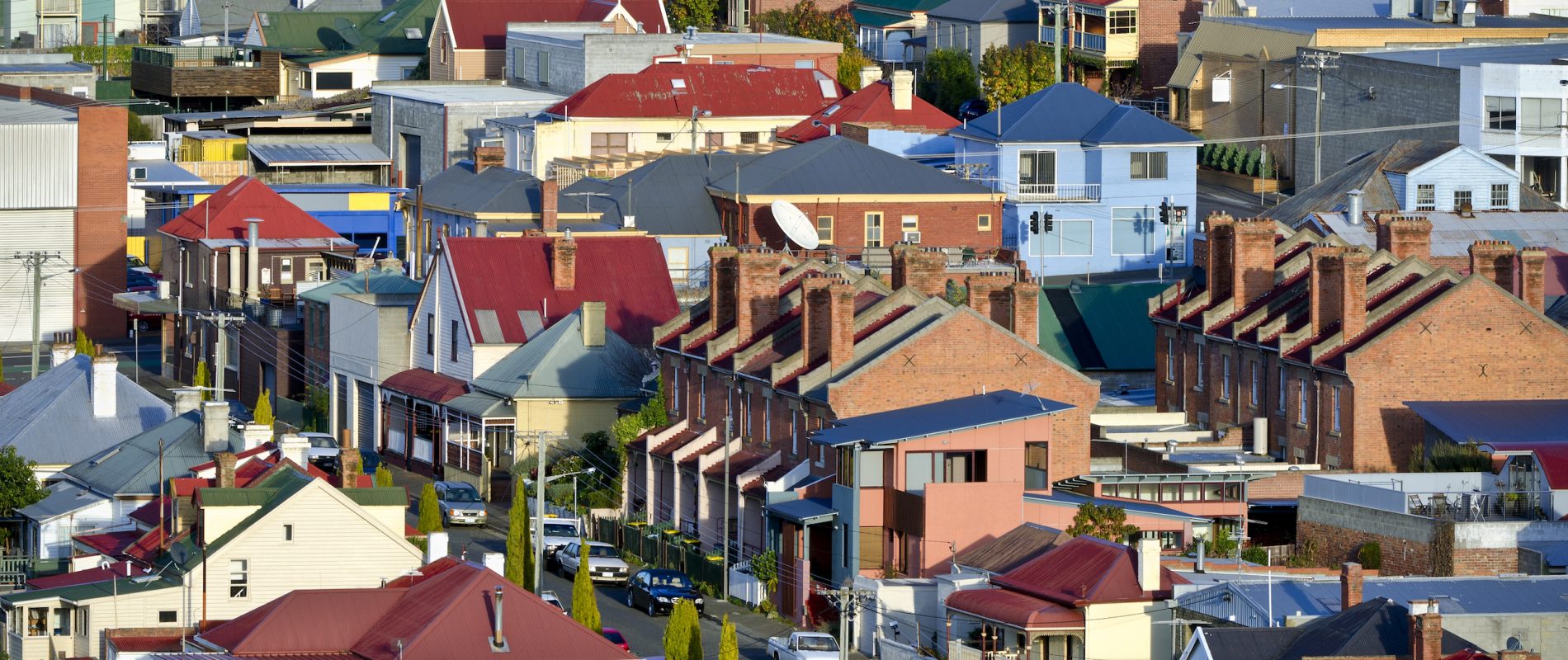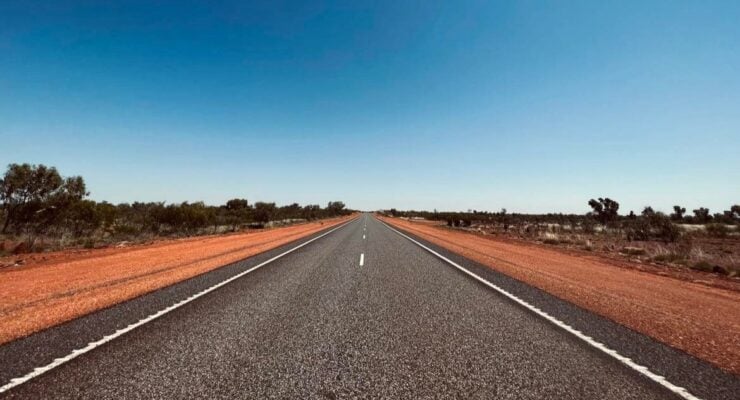Van-dwelling or living in your vehicle
Living in your vehicle (campervan, 4WD or car) and camping can be a great cost-effective solution to explore a territory as big as Australia.
However, some rules apply—for instance, you can’t just park wherever you feel like camping overnight. A few cities and towns have strict bylaws regarding overnight parking and camping. If you’re lucky and the ranger or manager is in a good mood, you will simply be asked to leave the non-designated area, but you could just as well get a hefty fine (a few hundred or even thousand of dollars!) for illegal camping.
Choosing a vehicle
Campervans
Campervans were designed for, well, camping, so you can live in your vehicle fairly comfortably. Depending on its size and layout, you may be able to set up a small kitchen unit between the driving area and the berth (so that you can cook inside the vehicle) or at the back (where you’ll be standing outside for meal prep). The main downside of campervans is that they are not permitted on unsealed roads (unless they are a 4WD), so you have to stick to sealed/bitumen or well-maintained roads.
4WDs
Depending on the layout, you can set up a sleeping area much like in a campervan. However, many WHV holders opt for the rooftop tent option—it’s exactly that, setting up a tent on the roof of the parked vehicle at night! There are a few downsides, including being easy to spot (a rooftop tent kind of stands out…), potential issues in case of strong wind and heavy rain, and having to climb in and out of it (sometimes in the middle of the night if you need to pee!).
Station wagons
This type of vehicle is cheaper than a campervan and most are 4WDs. It’s a great option for solo travellers. Couples may find it a bit tight to sleep in—the best solution is often to use a traditional tent or a rooftop tent to have more space.
If you’re going to camp, invest in a roomy tent with waterproof and breathable walls. Remember, the weight isn’t an issue; it will stay in the vehicle, so you won’t have to carry it around! The key is to find a tent cool enough to withstand Australia’s heat, yet warm enough when the temperature drops down at night (which is common in the Outback).
Are there other options?
WHV holders occasionally travel in smaller, cheaper vehicles, like minivans. Living in a minivan may be difficult, but you can always sleep in a tent.
Camping around Australia: Where to park and camp overnight
There are several options available to those who live out of their vehicle:
Free campsites
The mecca of WHV holders who live in their vehicle—they are free! You’ll find free campsites all over Australia but mostly in remote areas and small towns (rarely on the coast). Some of them only allow self-contained vehicles, i.e. those with their own fresh water tank, waste water tank and toilet.
Towns who offer travellers a free campsite usually hope to boost their economy. Do your part, shop in town, grab a drink, chat with locals!
Free campsites are usually barebones—consider yourself lucky if toilets and a BBQ grill are available.
State forests are usually free to camp throughout Australia. It’s a great way to enjoy the outdoors, but remember these campsites are pretty remote and toilets are not often available.
Rest areas
It can also be free to camp overnight in designated rest areas, but check on Wikicamps Australia or Camps Australia Wide before settling in.
As the name indicates, the point of a rest area is to allow drivers to rest for a few hours to avoid accidents from driving tired. Don’t outstay your welcome—a 12-, 24- or 48-hour limit usually applies.
You will find rest areas along many Australian highways. If you’re lucky, the “driver reviver” shop will be open (usually during holidays and long weekends) and you’ll find a free coffee or tea and snacks (e.g. biscuits or crisps).
Donation-based community campsites
A few towns operate campsites to encourage travellers to stop by and boost the local economy. Toilets and showers may be available. Some of these campsites are donation-based, where you’ll put your contribution in a small envelope when you arrive or leave.
Camping in car parks
If you simply need a parking space, hotels or shopping centres in a few rural areas or small towns may welcome your vehicle for the night, as long as you buy something from the establishment first.
Note that toilets may be closed overnight and that you’re supposed to sleep in your vehicle; tents aren’t welcome. As with the free campsites, you need to check how long you are allowed to stay for, or if it’s even legal to sleep there overnight.
Casual camping on showgrounds and ovals
In Australia, a “showground” is a place where events occur, from agricultural shows to concerts, fairs to dirt track racing. As for the “oval,” it’s a venue for cricket and Australian football. As far as you’re concerned, it’s a potential large, flat campground and some towns agree with your perspective, as long as no event is scheduled.
You may have to pay a small fee. Toilets are always available, sometimes you will have access to showers and power.
In tourist areas, showgrounds can be very popular with campers and spots are limited, so show up early or book when it’s possible.
National parks
National parks are managed by state and territory governments, so there’s no national pass. Rules, fees and payment methods vary greatly. You may find toilets (often a dry toilet) and occasional solar-powered showers on the campsite.
Note that you can occasionally find free campsites in national parks. Otherwise, the fees below apply. They depend on the location and the amenities.
- New South Wales: Free campsites do exist, otherwise you will need to pay a fee. The fee varies depending on the location but averages at around $8/person. You can book your spot online. Book ahead in high season for the most touristy parks.
- Queensland:The fee is $7.25/person. You can book your spot online. Before camping in a park, forest or reserve, you must obtain a camping permit and pay your camping fees.
- Northern Territory:The fee depends on the campground facilities—basic facilities cost $10/person and premium facilities $20/person. You can book your spot online.
- Western Australia: In popular national parks like King Leopold Ranges, Purnululu, Windjana Gorge and Dirk Hartog Island, expect to pay between $15/person and $20/person. You can book online. In other locations, fees range from $15/person for a campground with some facilities (toilets, barbecue, picnic area) to $10/person for a barebones campground without facilities. In less touristy locations, a ranger may come by once a day to collect your fee, or you may have to drop it in an “honesty box”!
- South Australia: The fees vary, depending on the location and the facilities. If you want power and more comfort, expect to pay around $25-$30/person. Spots must be booked and paid online or through an agent; see Book & Pay for more info.
- Tasmania: The fee is around $13/two people, but additional fees apply for extra campers and the usual variations (location, facilities, etc.). There isn’t (yet) an online booking system, so you must pay on-site at the visitor centre or drop your fee in an envelope when you arrive. You can look up the info for your campsite in advance to check the fees.
- Victoria: The fee depends on the season (high, low, shoulder season). Budget around $17-$30/site for peak season (the fee is often per site, regardless of the number of campers). You must book and pay ahead online.
Note that camping and accommodation fees are usually in addition to national park entry fees, where applicable.
Watch out, camping is a popular activity in Australia! It can be difficult to find a spot in a national park during the Christmas break (mid-December to mid-February), especially right around Christmas and New Year (i.e. from December 20 to January 2).
Easter and spring/summer long weekends (check a calendar for Australian bank holidays) also fill up quickly, too. If you’re camping during the high season, show up very early, or book online well in advance.
Private campgrounds and caravan parks
From family-owned campgrounds to large holiday park providers, there are plenty of options. Some campgrounds are dedicated to tourists, but others are home to seasonal workers and long-term residents.
Your spot can be powered (usually around $50-$75) or non-powered ($35-$40). Access to toilets is either free or paid (in which case, you’ll need a key, a code or a card). Some campsites have a camp kitchen indoors or outdoors with a fridge.
The closer you are to the coast and big cities, the higher the fee. Aim for inland or remote locations if you need to stretch your budget.
The fee is usually for one spot for two campers. Additional fees can apply if you’re travelling with a group or as a family. If you’re travelling solo, unfortunately, you usually have to pay the same amount as two campers would!
Is living in a campsite while working doable?
Many WHV holders who take up seasonal work choose to live on a campsite. You can potentially save a lot of money if you find a free spot close to your work site. However, a maximum stay often applies, e.g. 36 hours every 30 days. Besides, free campsites rarely have showers, and when they do, you probably won’t get hot water. A hot shower does make a huge difference after a long workday in the sun!
You’re likely to be more comfortable in a paid campsite, and many offer a weekly rate that’s a better deal than nightly fees. You’ll get a better overall experience and better facilities (hot showers, camp kitchen, etc.).
Several chains of holiday parks offer a membership option for a fee—every time you stay in one of the affiliated parks, you’ll get a discount and access to various perks:
Where do I stay if I want to stop in a city?
A few cities do have nearby campsites. You will be in the suburbs, but going downtown shouldn’t be too difficult using the local public transit system (bus, train, etc.). This way, you can leave your vehicle at the campsite and you won’t have to worry about parking in the city centre.
You could also look for a place with a private parking spot on Booking.com or Airbnb. Rates can be very reasonable if you’re willing to stay in a suburb and if you book ahead.
Finally, see if you can find a hostel with a parking lot that welcomes campers. You may be able to use the facilities (showers, etc.) for a fee.
Which camping app should I use?
To find campsites all over the country, your smartphone is your best friend. Here are the pros and cons of two main apps on the market, so you can decide which one is best for your needs:
- Wikicamps, a user generated database of campsites, caravan parks, day stops, backpacker hostels, rest areas and more in Australia.
- Camps Australia Wide, the digital version of the paper guide, a cheaper option if you don’t mind the fact you won’t have the road maps included in the book.
Note that to fully use these apps, you need access to Internet—price updates, comments, etc. only work properly with a good connection. Offline, you get a map with campsite locations.
Wikicamps ($9.99, available for IOS and Android devices)
Pros: Australia’s top app for campers offers current, accurate fee listings and there’s plenty of recent feedback on campsites. It’s a great app for finding the latest info, including facilities available or nearby (showers, washing machines, etc.), parking spots and sights.
Cons: The filter system is efficient but it lacks a price filter—the only option is “paid” or “free” campsite. Parking spots and sights are hard to find and read on the app—sometimes, you have to check all the dots on the map to find what you’re looking for. Recent reviewers report it can be slow to load.
Camps Australia Wide (free app available for IOS and Android devices, paper guides available for purchase)
Pros: You can filter campsites based on your budget—“free,” “low cost,” etc. Unlike with the Wikicamps app, you don’t have to click on each campsite to know the fee. You can try the free app if you aren’t sure if the paper guide will be worth your money (though the paper guides are more comprehensive).
Cons: There’s much less feedback than on the Wikicamps app. Prices aren’t always accurate; they can be higher or lower once you get there. The app focuses on campsites and doesn’t mention details about shower/facilities availability (which are in the paper version of the guide).
What about campfires?
Australians love campfires and as long as it’s not bushfire season (which is often a total fire ban), you can usually have a campfire.
Campfire safety and rules apply, so check before you get the matches out. Fires are not permitted in certain places and at certain times of the year/under specific weather conditions. Sometimes, you can only use the fire pit available on the campsite.
Always bring your own wood. Cutting or collecting wood in national parks is absolutely prohibited and you will be fined. The removal of fallen trees and deadwood can lead to soil erosion and loss of vital habitat for native animals, birds and insects.
Where do I find showers, power and Internet access on the road?
Taking showers on the road
In some towns, if you’re lucky, you’ll find a public shower next to the public toilets. Showers can also be available on the beach (cold water only). For outdoor showers, only expect the privacy of a public changing room nearby!
You can also find paid showers in service stations (“roadhouses”). Hostels and public swimming pools may open their facilities for a fee. The Wikicamps app has great info on where to find showers.
Paid campsites almost always have shared bathrooms with showers and hot water.
No showers available around? Freshen up with a wet cloth or wipes. Stop by a paid campsite once in while to take a real shower… you will find it’s worth it after a while.
Powering up your vehicle and charging devices
You can use one of the following three options:
- A powered campsite: You’ll pay more than for an unpowered spot, but you will be able to hook up the power to your campervan or vehicle. If you’re using a tent, bring an extension cable for outdoor use and a multi-socket plug adaptor to charge your devices. A few campsites, especially those with a camp kitchen, will let you plug your device for a few hours while you’re cooking, for instance.
- A secondary battery: Installing a dual battery system in your campervan will give you power without draining the starting battery; it charges off the vehicle alternator.
- Charging while driving: While you’re driving (otherwise it drains the battery!), you can plug your devices into a USB port or a converter in your vehicle.
Outside your vehicle, you may find plugs in coffee shops, fast food places, public libraries, etc. Always bring a multi-socket plug adaptor to charge several devices at the same time!
Finding Internet access
Public libraries may have an open Wi-Fi network but it may be limited for non-members.
Malls, coffee shops and restaurants can be good spots for free Wi-Fi access. The following chains have free Wi-Fi: Bunnings, Hungry Jacks (limited access), OfficeWorks and Starbucks (few locations outside of Melbourne, Sydney and Brisbane).
In McDonalds’ (known as “Maccas”), you can connect to “Free Wi-Fry.” You have to register (but it’s free) for unlimited access, otherwise you’ll get a 30-minute time limit.
If you have a plan with data, you can use your smartphone as a hotspot to connect your laptop to the Internet.
Telstra customers can enjoy Australia’s largest Wi-Fi hotspot network. You can look up your nearest hotspot on their website.
A word of warning on public Wi-Fi: stay safe and protect your privacy on unsecured networks, especially when checking your bank account. Consider using a VPN to keep your info secured.












 Français
Français English
English




0 comments
{{like.username}}
Loading...
Load more